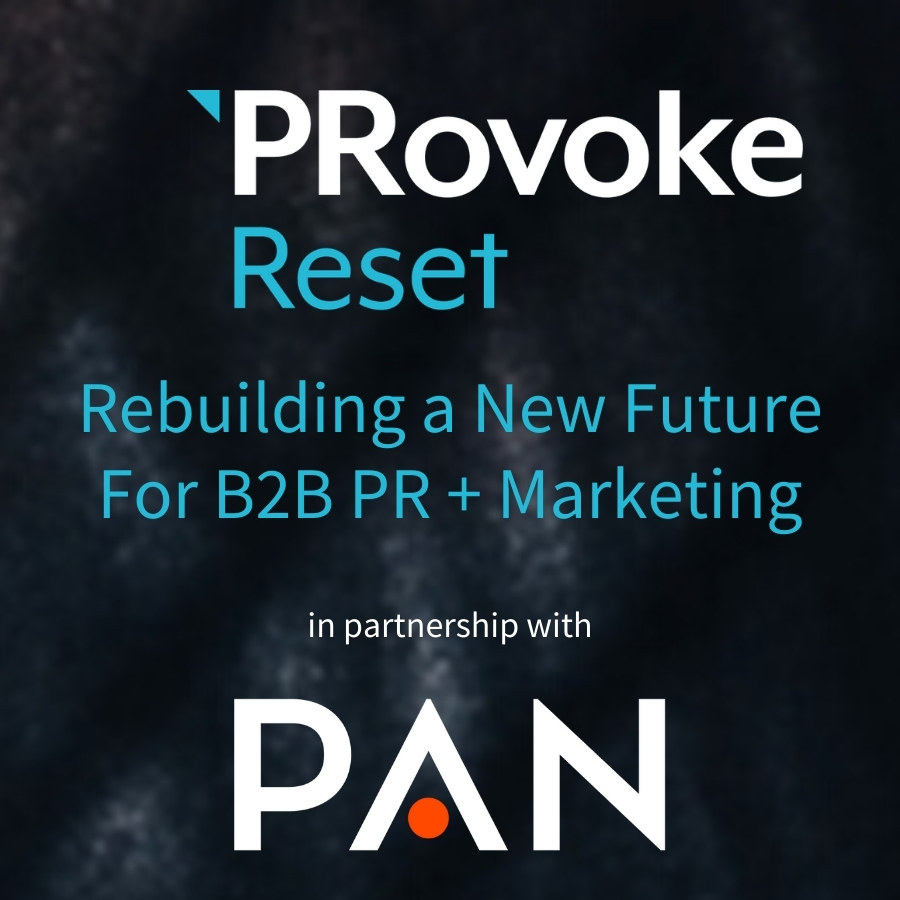Brent Giannotta 07 Apr 2021 // 5:28PM GMT

The year 2020 was an economic gut-punch. Companies across the economy canceled conferences, client meetings, outreach activities, and live events. Many were forced to part with prized employees and many others saw their clientele evaporate almost overnight.
Now, it’s 2021, a year when recovery looks imminent but certainty is rare. One thing we know for certain is that “business as usual” definitely will not suffice. As customers and businesses work to get back on their feet, a small number of PR firms will rise higher than their competitors and excel past their previous benchmarks. Those firms will be the ones that begin offering more value for their price and start developing leads for their clients.
“PR agencies need to start thinking like salespeople,” said Mark Nardone, executive vice president at PAN Communications, “because of the complete evisceration of lead generation opportunities in 2020.”
Rod McLeod, VP of Corporate Communications at Braze, says it’s a delicate balance for in-house communicators between integrating their PR firms with the sales process versus expecting their firms to outright generate sales leads.
“PR is all about creating awareness and driving top of funnel activity, and awareness should continue to be the primary goals of any PR program,” McLeod said. “That being said, there are campaigns where it makes sense to have awareness goals and lead generation goals.”
For instance, over the past year, Braze has built out its data storytelling capabilities and created campaigns around data reports on streaming, retail, and customer engagement. For each of these reports, there is a cross-functional team, spanning business intelligence, industry solutions, marketing, and external participants.
“In this example, communications is in charge of producing the report, and the launch with support from other functions within Braze,” McLeod explained. “After the launch, we rely on our other marketing teams, including content and demand generation, to take the baton and use these reports to support various content and paid campaigns, ranging from webinars to advertorials. This formula has produced our best integrated marketing campaigns to date, generating great media coverage and new leads, and pushing existing sales conversations down the funnel.”
According to Nardone, working along with the client to generate leads in an uncertain business environment is an explosive way firms can build trust with clients. But for most, it will require a number of important operational changes.
“If you don’t understand what the funnel looks like, it’s hard to engage with marketers,” said Nardone.
The funnel refers to how to envision one’s audience, where the wide top represents a broad audience and the narrower end represents a targeted niche. Nardone stresses that lead generation opportunities proliferate the further down the funnel PR firms travel, where they have traditionally been skittish to go.
“We’ve lived at the top of the funnel for a long time — building awareness through earned media — based on brand needs, desires, and audiences,” Nardone said. “It was a lot of mass marketing and broad-brush PR, but now we’re getting pulled more toward the middle of the funnel, toward more personalization and individualization.”
Abigail Barton, head of communications at Monmouthshire County Council and Pembrokeshire County Council, who formerly worked for nearly a decade in marketing at Lloyd’s Banking Group, points out that “PR should be considered as one element of a channel neutral, integrated campaign, with all channels working together to generate leads — it might be difficult to attribute each lead to PR directly, but good PR will work as a key part of the media mix — the multiplier effect.”
Firms that excel at generating leads will be the ones that understand digital media channels and how to tailor messages for each. PAN’s Nardone stresses that PR professionals who continue using one-size-fits-all approaches will not generate valuable leads. Rather, surgical messaging construction will be the new secret weapon.
“As you look strategically at brands, audit, assess, and think competitively about what to communicate and how,” said Nardone. “But it can’t stop there. You also need to adjust tone, personality, and the way your purpose and value are conveyed to audiences over different outlets. This will also build credibility.”
Nardone notes that most communication shops are not designed to coordinate messaging across departments. Many will need to make organizational changes that enable better collaboration for this new type of capacity.
Simon Sanders, global social media & content manager for Cloud Communications, NTT, sees PR as juggling multiple roles that include lead generation, raising awareness, and protecting reputation. Even so, typically other functions are tasked with scale and accountability around sales.
“Advertising is your striker; PR, your goal-scoring midfielder,” Sanders said. “And to build further: plenty of start-ups knowingly use PR to generate 'leads' that are not consumers, but investors. And many only use PR —including media relations— not advertising to generate those kinds of leads.”
Tapping into another analogy, Nardone says “the CMO is the orchestrator and should start the ideation stage early by pulling in the demand team, social team, and PR team to create and vet cool ideas.
“Incorporate analytics to vet how messages hit different audiences and then converge all the coolest mindshares into a set of campaigns tailored for specific outlets and audiences. If you don’t have the right story, you can forget about lead generation,” he added.
The right story, Nardone stresses, is content that doesn’t just convey a message like in years past. In uncertain times, when digital communication is critical to attracting customers who are spending more time online than ever, a brand’s message should take the audience on a journey. The content should be orchestrated to usher the user from the point of brand discovery all the way to the point of brand allegiance.
“You want them to have the right journey,” Nardone said. “The right content drives the consumer from one point to the next. If you put something out on earned media that does not connect from the previous and to the next, you’ll get a massive bounce rate. Alignment of message, story, SEO, and keywords is critical and must be visible across departments to work successfully.”
The process does not start at the website. That is not where most internet users discover new brands. They discover them in ads, in social media posts, in earned media articles, and in forwards from friends with similar taste. Point-of-contact content, therefore, must not only be compelling but crafted to pull the viewer to the website where the brand’s story is complementary and consistent, where it clearly conveys the company’s purpose and invites the user toward a place of increased intimacy with the brand.
“Persona consistency is key,” Nardone said.
Mark Stouse, CEO of Proof Analytics, echoes PR’s crucial role in the entirety of the customer journey. For instance, most B2B purchases require careful cost and risk consideration. Building confidence and trust in the latter 50% of the journey translates to bigger deals and faster deal velocity, he said.
Even so, Nardone insists that lead generation requires more focus and maintenance than most PR firms currently give to messaging campaigns.
“There is a lot of strategy to devise upfront,” Nardone said. “Before you launch, you have to make sure the playbook is humming. This is not something you set up and let go of. You have to revisit it, every quarter — or every month — with quality analytics, which will make you look like a marketer but it will be executed like fully-integrated, high-level PR.”
Consistency of message, tailored across channels and calibrated to pull the customer along a brand’s journey, delivers the kind of direct benefits that makes clients feel like their messaging partners are critical to their bottom line, and even their survival.
“We can build a lot of brand equity,” Nardone says. “We can drive revenue. Reputation now drives revenue. You must understand your buyer. Is your message tone deaf? If so, it will devastate your bottom line. Reputation has never been as important as it is today.”



































.jpg)


















